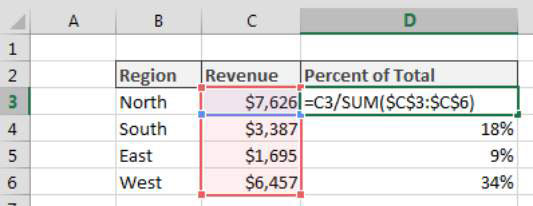
r = your monthly interest rate. Although the percentage formula can be written in different forms, it is essentially an algebraic equation involving three values. You should see the result in the second row of column D.Percentage Formula. This will convert the result of the formula to percentage and display a ‘’ sign next to the result. Alternatively, you could navigate to Format->Number->Percent from the menu bar. Press the ‘ Format as percent’ button () from the toolbar.

Many homebuyers know about these costs but are not prepared for are the hidden expenses of homeownership. That’s where a simple mortgage calculator like ours can help.A mortgage payment includes four components that together are known as PITI (pronounced “pity”): principal, interest, taxes and insurance. Setting a budget upfront — long before you look at homes — can help you avoid falling in love with a home you can’t afford. How a mortgage calculator can helpBuying a home is the largest purchase most people will make in their lifetime, so you should think carefully about how you’re going to finance it. It’s always a good idea to rate-shop with several lenders to ensure you’re getting the best deal available.
A lower credit score and higher DTI can make you a riskier borrower in lenders’ eyes. Your specific interest rate will depend on your overall credit profile and debt-to-income ratio, or DTI, which is the sum of all of your debts and new mortgage payment divided by your gross monthly income. It’s important to have some cushion in your budget for unexpected or emergency costs.You also can adjust your loan and down payment amounts, interest rate and loan term to see how those variables affect your monthly payment.
That’s a gross monthly income of $5,000 a month.$5,000 x 0.28 = $1,400 total monthly mortgage payment (PITI)Joe’s total monthly mortgage payments — including principal, interest, taxes and insurance — shouldn’t exceed $1,400 per month. Most financial advisers agree that people should spend no more than 28 percent of their gross income on housing (i.e., your mortgage payment), and no more than 36 percent of their gross income on total debt, including mortgage payments, credit cards, student loans, medical bills and the like.Here’s an example of what this looks like:Joe makes $60,000 a year. Deciding how much house you can affordIf you’re not sure how much of your income should go toward housing, follow the tried-and-true 28/36 percent rule.
Next stepsA mortgage calculator is a springboard to helping you estimate your monthly mortgage payment and understand what it includes. The last thing you want to do is jump into a 30-year home loan that’s too expensive for your budget, even if a lender is willing to loan you the money. Lenders don’t take those budget items into account when they preapprove you for a loan, so it’s up to you to factor those expenses into your housing affordability picture for yourself.Knowing what you can afford can help you take financially sound next steps.
Bankrate cannot guaranty the accuracy or availability of any loan term shown above. In the above table, an Advertiser listing can be identified and distinguished from other listings because it includes a "Next" button that can be used to click-through to the Advertiser's own website or a phone number for the Advertiser.Each Advertiser is responsible for the accuracy and availability of its own advertised terms. Other lenders' terms are gathered by Bankrate through its own research of available mortgage loan terms and that information is displayed in our rate table for applicable criteria. Some lenders provide their mortgage loan terms to Bankrate for advertising purposes and Bankrate receives compensation from those advertisers (our "Advertisers"). Learn more about specific loan type rates Loan TypeThe table above links out to loan-specific content to help you learn more about rates by loan type.The above mortgage loan information is provided to, or obtained by, Bankrate. You’ll also have a clearer idea of how much money you’ll need to bring to the closing table.

Doing so may confirm your initial hopes about the benefits of an ARM - or give you a reality check about whether the potential plusses of an ARM really outweigh the risks.Find out when to get rid of private mortgage insurance. Then, compare those payments to the payments you get when you enter the rate for a conventional 30-year fixed mortgage. While an ARM may be appropriate for some borrowers, others may find that the lower initial interest rate won't cut their monthly payments as much as they think.To get an idea of how much you'll really save initially, try entering the ARM interest rate into the mortgage calculator, leaving the term as 30 years. You can make these extra payments monthly, annually or even just one time.To calculate the savings, click the "Amortization / Payment Schedule" link and enter a hypothetical amount into one of the payment categories (monthly, yearly or one-time), then click "Apply Extra Payments" to see how much interest you’ll end up paying and your new payoff date.The lower initial interest rate of an adjustable-rate mortgage, or ARM, can be tempting. Please click here to provide your comments to Bankrate Quality Control.Most people use a mortgage calculator to estimate the payment on a new mortgage, but it can be used for other purposes, too.Use the "Extra payments" functionality of Bankrate's mortgage calculator to find out how you can shorten your term and save more over the long-run by paying extra money toward your loan's principal.


 0 kommentar(er)
0 kommentar(er)
